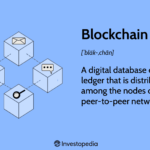In an era where technology leaps forward at breakneck speed, Generative AI stands out as a beacon of innovation, captivating the imagination of both tech enthusiasts and industry professionals alike. At the heart of this fascination is the technology’s ability to not just imitate human creativity but to push the boundaries of what’s possible in art, language, and problem-solving.
This article delves into the core reasons behind the meteoric rise of Generative AI, exploring how its unique capabilities are transforming industries, influencing creative processes, and redefining our interaction with technology. Join us as we unravel the mysteries of Generative AI’s popularity and its profound impact on the digital world.
- Who are the biggest players in generative AI? This section can explore major companies and research institutions that are leading the field of generative AI. Key players often include OpenAI (the creators of GPT models), Google DeepMind, IBM, and other tech giants with strong AI research divisions.
- Why is generative AI so expensive? Discuss the factors contributing to the high costs of developing and maintaining generative AI systems, such as the need for large datasets, extensive computational resources, and skilled personnel.
- Who created ChatGPT? ChatGPT was developed by OpenAI, an AI research and deployment company. You can delve into the background of OpenAI and the team behind ChatGPT, including their goals and vision for the technology.
- How do I create a generative AI? This part can cover the basics of what it takes to develop a generative AI model, including the technical requirements, knowledge in machine learning and neural networks, and the resources needed.
- How does ChatGPT work? Provide an overview of the underlying technology of ChatGPT, such as its use of the transformer neural network architecture, training methods, and how it processes and generates human-like text.
- Why is ChatGPT suddenly popular? Discuss the factors that led to the sudden surge in popularity of ChatGPT, like its advanced conversational abilities, accessibility, diverse applications, and the growing interest in AI technologies.
- What problems can generative AI solve? Highlight the diverse applications of generative AI in various fields such as healthcare, entertainment, business, creative arts, and more. Emphasize its problem-solving capabilities in data analysis, content creation, and automation.
Each of these sections will provide your readers with a comprehensive understanding of generative AI, its applications, and its significance in the current technological landscape.
As we navigate through the intricacies and breakthroughs of Generative AI, it becomes evident that this technology is not just a fleeting trend, but a cornerstone in the evolution of how we interact with digital environments. In our journey to understand its impact, we’ve explored its major players, its capabilities, and its challenges. Now, as we draw towards the conclusion, let’s address some pivotal questions that encapsulate the essence and practicality of Generative AI and its renowned offspring, ChatGPT. These inquiries not only shed light on the fundamentals of this groundbreaking technology but also provide insights into its everyday applications and far-reaching influence.
- What is Generative AI? Begin by defining Generative AI in simple terms – as a type of artificial intelligence that generates new content, be it text, images, or music, by learning from existing data. Emphasize its ability to mimic human-like creativity and generate outputs based on learned patterns and information.
- What is ChatGPT Used For? Expand on the various applications of ChatGPT, highlighting its versatility in tasks such as conversational agents, content creation, language translation, educational tools, and customer service automation.
- Does ChatGPT Cost Money? Address the availability and pricing structure of ChatGPT, mentioning any free versions or subscription models that exist, and how this impacts users.
- How to Use ChatGPT in Daily Life? Offer practical examples of how individuals can integrate ChatGPT into their daily routines, such as for drafting emails, generating creative writing ideas, or obtaining quick information.
- Can GPT Chat be Detected? Discuss the ability to distinguish between text generated by GPT models and human-written text, focusing on the nuances in language patterns and the ongoing advancements in detection methodologies.
- How Many People Use ChatGPT? Conclude with statistics or estimates on the user base of ChatGPT, highlighting its growing popularity and widespread adoption across different sectors.






